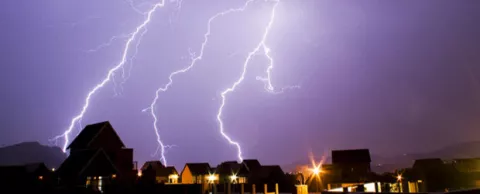
Microgrids do more than simply provide stand-alone emergency backup power. They can help communities integrate renewable energy resources and energy storage, decentralize their sources of power while maximizing those assets and help ensure that power quality remains reliable, even in the immediate aftermath of climate-related disasters. As you know, reliability and sustainability are key elements of the smart cities initiative. We realize microgrids are still seen as a relatively 'new' disruptive technology, but keep in mind the state that sustained severe damage from a succession of major storms is the first to significantly invest in a statewide microgrid program. And more have been built or are planned in several parts of the country for a variety of applications. It's something to consider when your city is working on its resiliency plans. — Doug Peeples
Connecticut's State Bond Commission this week voted to offer $30 million in microgrid project funding through the third round of a grant and loan program. The latest request for proposals (RFP) is expected to draw more attention to the possibilities microgrids offer, including emergency backup power and integration of clean decentralized electricity generation and storage.
"By creating microgrids, we can provide power for critical government operations, shelter for the public and business services people need, even when the lights go out elsewhere. This funding will mean further progress in our efforts to minimize hardships to our residents and businesses during times when the electric power grid goes down as the result of severe storms," explained Gov. Dannel Malloy.
The grant and loan program was part of a package of legislation the governor introduced in 2012 following a series of major storms. Many of the state's coastline communities were substantially damaged with many homes destroyed, thousands of residents evacuated and numerous long-term power outages.
Specifically, the microgrid program funds are available for design, engineering and grid connection as well as buying and installing new power generation facilities and energy storage systems.
As Robert Klee, commissioner for the Connecticut Department of Energy and Environmental Protection explained, "In addition to playing a critical role when the electric grid goes down, microgrids offer a real opportunity to diversify and decentralize our power system. Microgrids can provide power for their designated service area through a variety of reliable and environmentally friendly resources, such as fuel cells, combined heat and power systems and anaerobic digesters."
So far, three projects that obtained funding in earlier program rounds are operating. Two others should be operational when test results are in and four more are in the design or construction stage.
Microgrids aren't mainstream yet, but...
While many in the industry don't see microgrids going mainstream for another five to 10 years or so, many have been built and others are in the planning and construction stages. Last year, Council Lead Partners Schneider Electric and S&C Electric built an advanced microgrid for major Texas utility Oncor. The project included installation of four smaller connected grids with solar photovoltaic arrays, a wind turbine, generators and energy storage. They were designed to work together or independently.
Council Associate Partner Black & Veatch and Schneider Electric partnered in July to design and build a microgrid at the Marine Corps Air Station Miramar in San Diego, California. The project is intended to ensure that critical operations at the base will continue to have power if the main electric grid is damaged or disrupted. Black & Veatch also built a microgrid system at its headquarters which includes solar power, natural gas and energy storage. The company wanted to build the system to get real-world data on how different types of solar panels perform.
Microgrids also are being built and tested to determine their suitability and capabilities in remote locations. Council Associate Partner Siemens has worked with a remote Native American reservation to buid a community microgrid to power government offices, businesses and other services independently of the main power grid if needed.
For more on energy resilience...
While energy certainly isn't the only component of an effective, complete resilient cities program, it is one of the most important because all aspects of city operations depend on it. And a smart energy system includes technologies and practices designed to help ensure that the lights stay on during emergency conditions. To learn more about smart energy and implementing the related technologies and practices, the Energy chapter of the Smart Cities Readiness Guide offers discussion, best practices, case studies and recommendations.
Doug Peeples is a Portland, Oregon-based writer specializing in technology and energy. Follow @smartccouncil on Twitter.



